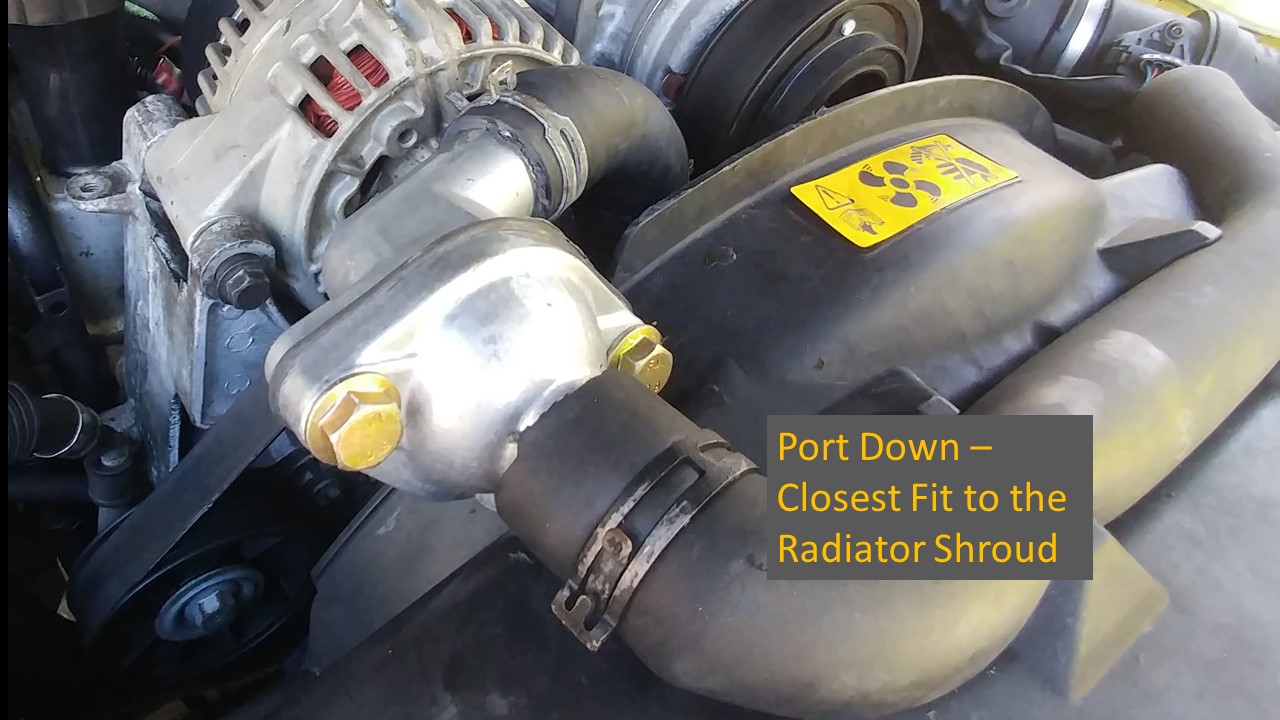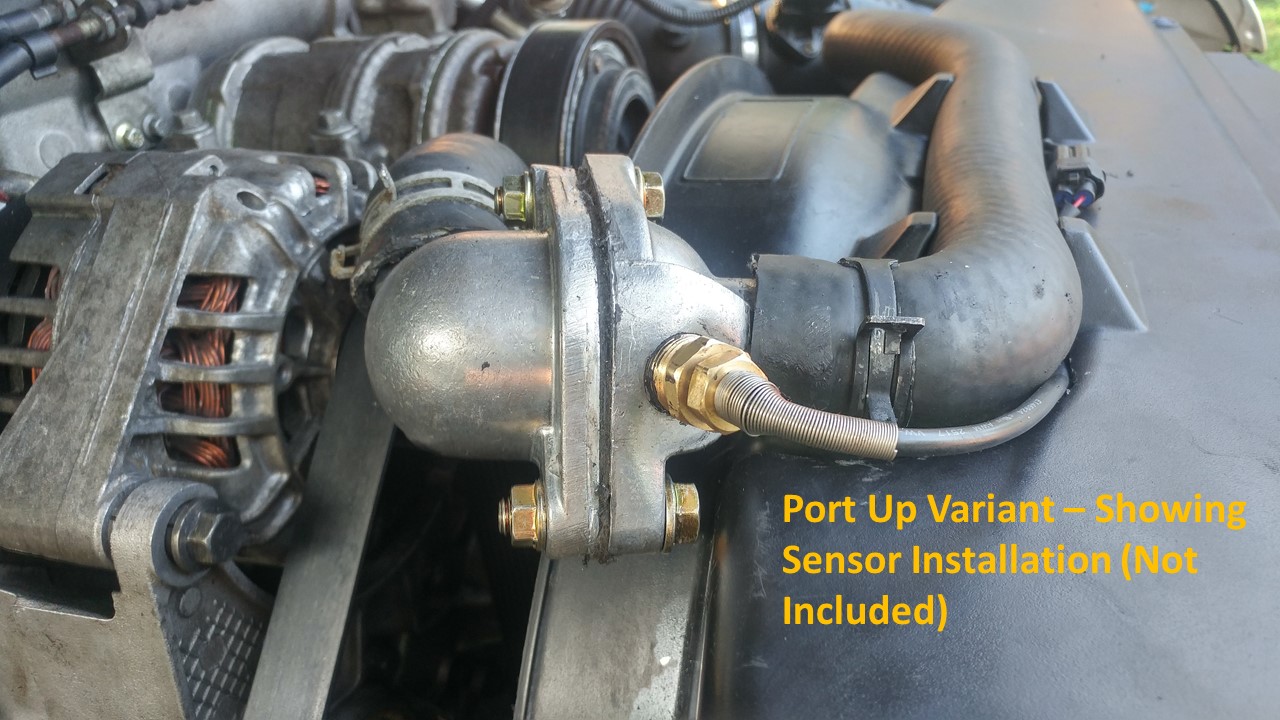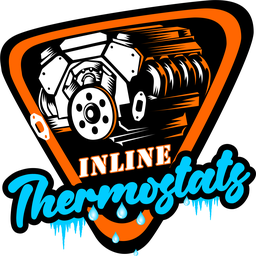- Do you ship internationally?
- Yes, however please be aware that customs processes to international destinations increases the shipping time considerably, up to three weeks to some destinations depending on the country.
- What is an inline thermostat?
- An inline thermostat is a thermostat located "in-line" meaning in the radiator hose -a.ka. inline
- Why would I need an inline thermostat?
- Typical reasons might include:
- Poor factory thermostat design causing frequent failures or large temperature ranges - some factory thermostat designs such as Land Rover Discovery or Range Rovers are a common failure point - often inline thermostats are a more reliable or consistent system. Some factory thermostat housings are plastic and have been known to crack or leak over time.
- Unavailability of alternate temperature thermostats for factory location or system - many factory thermostats are limited to a single temperature, often higher than desired for performance or reliability.
- Poor access to factory thermostat location - inline thermostats are typically used with removal of the factory thermostat and placed in more accessible locations such as the top radiator hose, making service faster and easier in most cases.
- Ability to easily swap thermostat temperatures, perhaps seasonally or for different operating environments - thermostat changes may be desired in marine applications where the vessel is transitioning from salt water to freshwater operation or vice versa, or perhaps summer operation vs winter operation in climates with high temperature variations seasonally, or in cases where the vehicle is relocating from a cold temperature environment to a high temperature environment.
- Ability to remove/test thermostat without significant coolant loss - some factory systems have the thermostat located relatively low in the cooling system, causing significant coolant loss during thermostat service. Inline thermostats can often be located in the top radiator hose which is often among the highest points in the cooling system, often involving minimal coolant loss during service.
- Ability to easily add aftermarket temperature sensors in to the cooling system. We offer kits with built in sensor ports to accommodate your sensor needs.
- What are the advantages of an inline thermostat?
- Key advantages of inline thermostats:
- Wider range of thermostat temperature options
- More easily accessible
- More reliable operation
- More consistent operating temperature range
- Less or no coolant loss during service
- Potential for running the engine without a thermostat installed for diagnostic purposes
- Why would I buy an inline thermostat from inline thermostats.com?
- Our thermostat kits are assembled from top quality components and come with a lifetime warranty on all components.
- Our kits are also much easier to service than some competitors products, requiring only standard hand tools instead of unusually large 2.5" wrench or plier openings.
- We offer a huge variety of housing kits to enable fitments in tighter spaces, with everything from zero degree straight housing kits to kits with angles tighter than 90 degrees between inlet and outlet.
- Our kits are available with or without bleed ports or sensors ports depending on your applications.
- Will an inline thermostat damage my engine?
- Generally no. Some engine designs utilize a bypass valve disc on the bottom of the factory thermostat. This disc prevents bypass circulation once the engine warms up forcing all coolant flow to go through the radiator. If your engine has this design factory thermostat it may cause the engine to run slightly hotter with the inline thermostat system. In those cases we recommend reducing the thermostat temperature lower than the factory thermostat to offset the difference. Some experimentation may be required to determine the correct temperature thermostat element.
- What temperature options do you offer?
- We can provide 140,160,170,180,190, and 195 temperature options.
- Can I use other thermostats in your housing kits?
- Yes, our kits accept standard small block Chevrolet thermostats with the 2.13" outside diameter. We do recommend drilling a .125" diameter bleed hole at the location shown below if you are going to use a thermostat from another provider. Ours have a smooth punched bleed hole in that location.
-
Where can I get installation instructions
-
What temperature thermostat is the best temperature for my 200(X) D2?
- We generally recommend the 180 degree thermostat for D2's. At highway speed on level ground the factory D2 cooling system can only maintain an engine temperature of 100 degrees over ambient (80 degree ambient = 180 degree engine, 90 degree ambient = 190 engine, etc) regardless of what thermostat is installed. Pulling a steep grade or a trailer the temperature will be even higher. The engine ECU will record a fault code for engine too cool at operating temperatures less than 180 degrees on 2003-2004 D2's and at cooler than 170 degrees on 1999-2002 D2s, although this is really only a problem in winter months.
-
My D2 engine starts to get hotter than the thermostat setting when I am idling for long periods
- The factory D2 water pump does not pump enough water at idle too keep the engine cool in hot weather with the AC on. If the engine is revved to approximately 1000-1200 rpm the temperature will come down to normal temperatures (remember, 100 degrees over ambient) or once normal driving resumes.
-
Which D2 Kit do I need, port up or port down?
- The port down kit fits a little closer to the radiator shroud giving a clean fit.

- The port up kit enables the use of an external temperature sensor or to use the sensor port at a bleed port if you prefer. It does not fit as tightly to the radiator shroud but does clear the hood with no problems.

